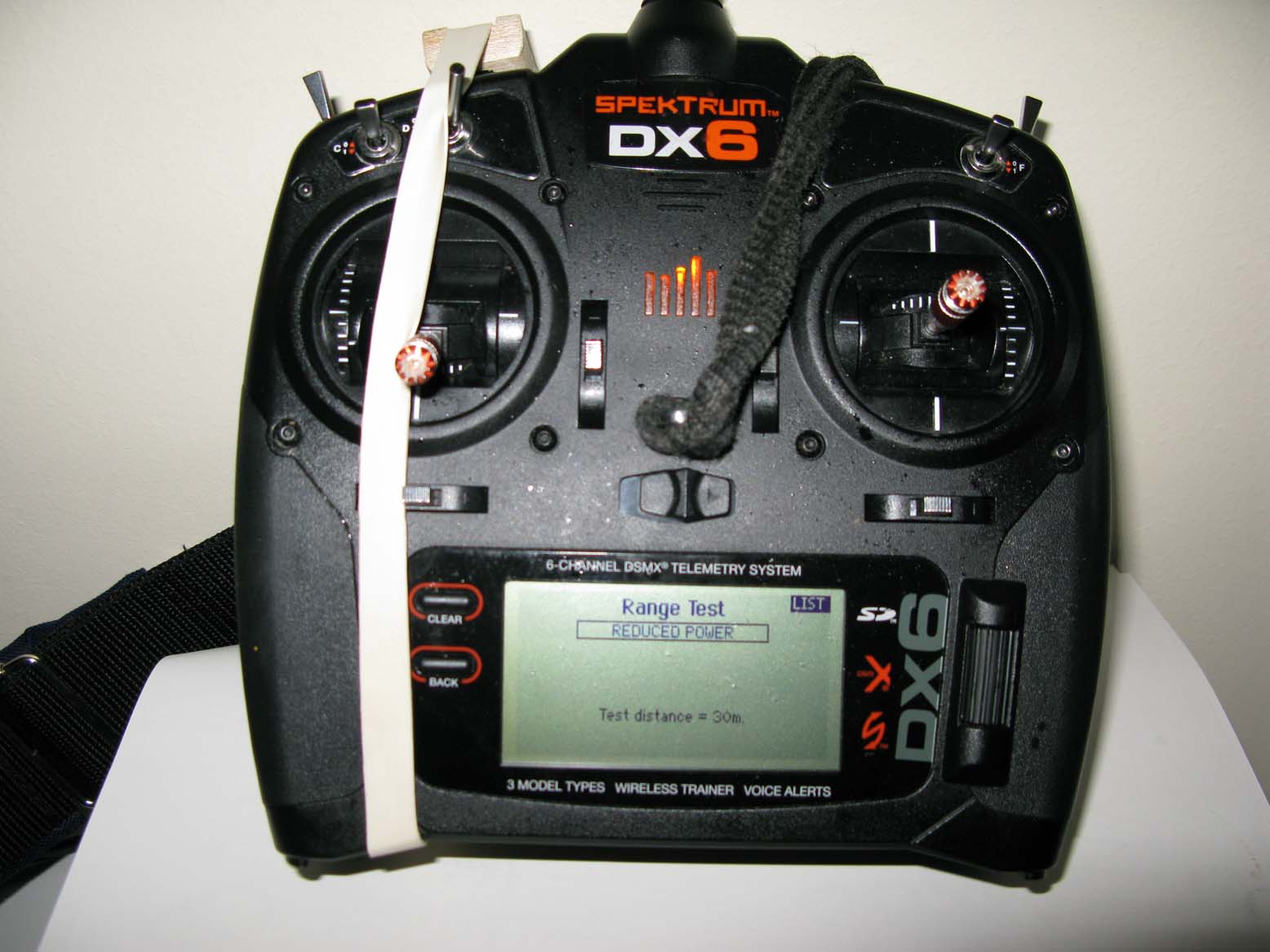If you have been following this series of articles on 2.4 gHz. RC system problems, you will have realised the following:
- The standard 30 yard Range Test is perfectly good for checking for major radio link faults in a Tx/Rx combination. In this case the aircraft is certain to issue Failsafes in flight.
- The Advanced Range Test, (ART), will, in addition, test for minor radio link faults in a Tx/Rx combination. In this case the aircraft will probably issue occasional Failsafes in flight.
If a radio fault is discovered with either of these tests, it is a good next step to determine whether the transmitter is at fault, or the receiver, or both.
This is especially true if you are ground testing new equipment, as it allows you to return equipment to your supplier prior to flying, i.e. unused, with a clear explanation as to what you have discovered in your testing and why you therefore cannot commit to flying with the unit because of associated safety risks. Such a detailed and carefully executed test will usually result in a no fuss, no fee replacement, which of course is only fair.
While you could test out the receiver and transmitter using laboratory eqipment such as oscilloscopes and spectrum analysers, this is well beyond the scope of the usual radio modeller and thankfully not necessary. The easier approach is well known and referred to as substitution.
Using an Rx Test Board and Banded on transmitter in Range Test Mode, (see pictures below), do comparison tests on the ground at the same time of day, in the same place. (This removes effects of weather and location).
Test 1. If the Rx is at fault and not the Tx, then comparing results with a second identical Rx will show the fault as reduced performance in faulty unit. (See the link to the ART below).
Test 2. If the Tx is at fault and not the Rx, then comparing results with a second identical Tx will again show the fault as reduced performance in the faulty unit.
If the Tx and Rx are both faulty, then both tests will show reduced performance in the faulty units.


Related Article Links:
2.4 gHz. RF link problems 1. New equipment failure
2.4 gHz. RF link problems 2. Tx/Rx RF link principles
2.4 gHz. RF link problems 3. Advanced Range Test Protocol
2.4 gHz. RF link Problems 4. Causes and Fixes
2.4 gHz. RF Link Problems 5. Failsafe Triggered
2.4 gHz. RF link Problems. 6. Failsafe Strategies
2.4 gHz. RF Link Problems 7. Faultfinding
2.4 gHz. RF Link problems 8. Failsafe Recovery Time









